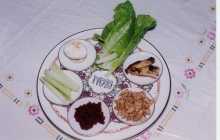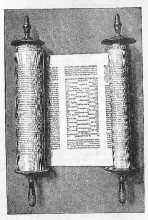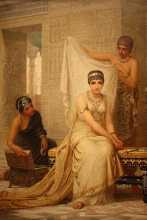Celebrating Passover in a Christian community
We live in a neighborhood with a very active Christian community. This means that every Easter, we are surrounded by community egg hunts and lots of Easter excitement. Now that our children are older, they no longer mind missing the trappings of Easter, but they are very sensitive to being perceived as different. As we prepare for our Passover Seder and study the meaning of our rituals, our kids naturally ask lots of tough questions about Easter.
When the kids were little it was easy to emphasize the similarities between our celebrations. Because Passover requires us to rid our house completely of bread, we had elaborate "bread" hunts as we cleaned, complete with prizes to reward the effort. Our crafty daughter decorated beautiful afikomen bags to use during the seder, which we dutifully hid for the children to search for during the long meal, and we even boiled eggs to include on our seder plates. Any questions about Easter egg hunts and decorating eggs were easily answered with "you get to hunt for bread and then later hunt for the beautiful afikomen bags you've made."
Now that they are older, they've started to ask about the connections between Passover and Easter. We've told them the Christian story, but they ask some interesting questions. For example, "why is it traditional to eat ham on Easter when Jesus would certainly have kept Kosher and shunned that meat?" I suggested that it might be to emphasize that Christians have broken away from their Jewish roots, but I don't actually know the answer. Fortunately, our kids like the discussions as much as the answer so these questions always lead to lively debates in our house.



